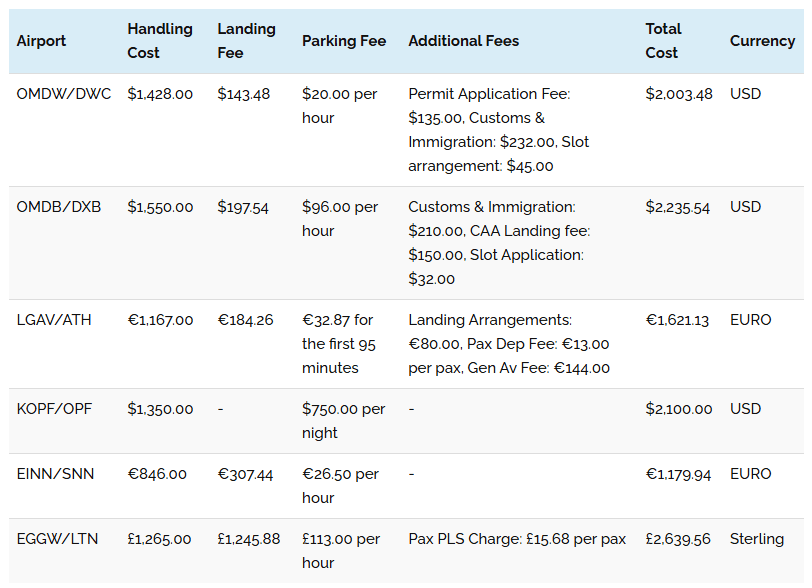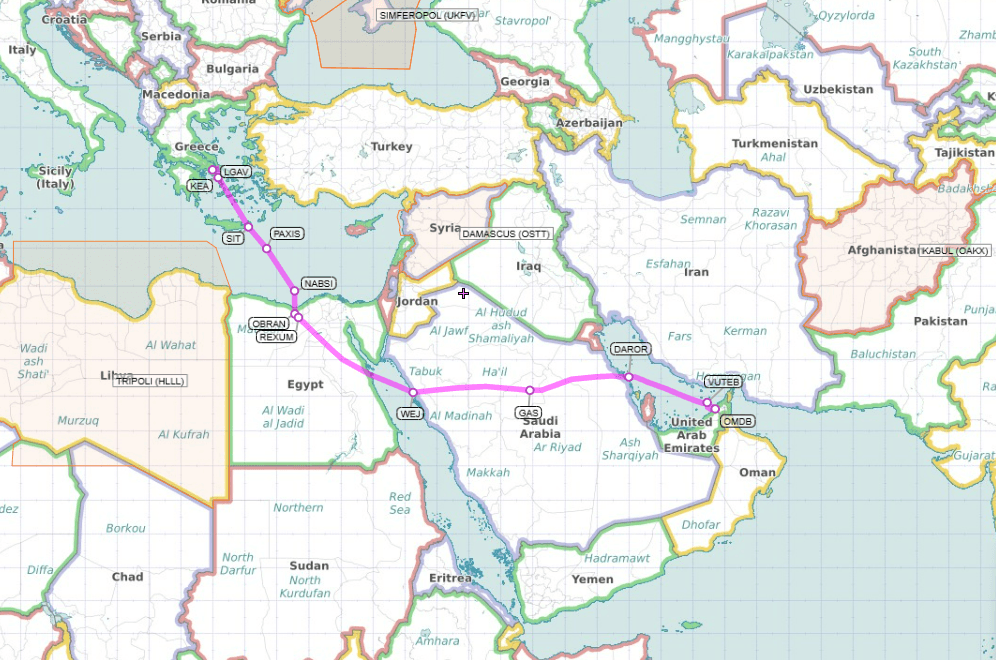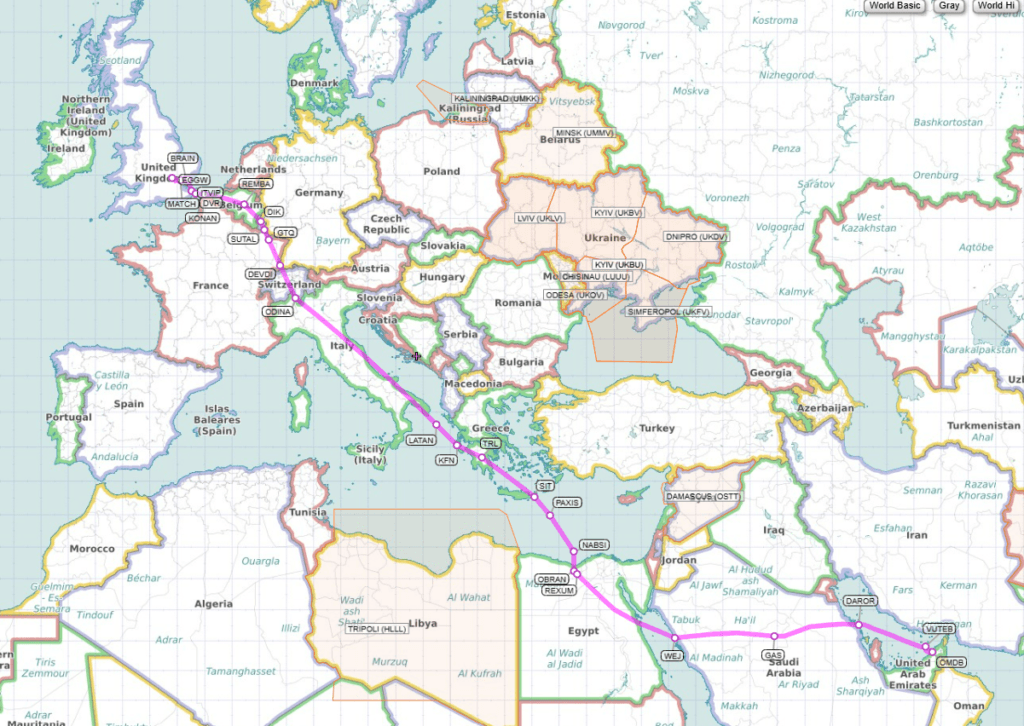Planning a flight with a private jet from Miami to Dubai requires many considerations in handling costs, parking fees, safety measures, and GPS interference challenges such as GPS jamming and spoofing. As more crews are flying to the Middle East each year, it becomes increasingly important to take the time to learn what tech stops work for your seamless journey.
Understanding the Challenges of a Miami to Dubai Flight
A private jet flight from Miami to Dubai crosses a wide range of regions with different airspace regulations, geopolitical considerations, and certainly varying service costs, including handling and parking. Properly selecting tech stops is vital to your flight’s efficiency, safety, and economy.
Cost Factor: Handling, Parking, and Fuel
One of the major factors a private jet crew must consider is the handling and parking costs of tech stops. These vary greatly depending on the popularity, location, and availability of services at an airport. The fuel cost also ranges, making the selection of the tech stops very important in ordering an affordable private flight.
For a Miami to Dubai flight, Athens International (LGAV) is preferable as a tech stop because of its strategic location, but it may be expensive and busy. Ground handling is €1,167 in LGAV, while parking will be €32.87 for the first 95 minutes. Maximum ground time is 8 hours, extendable to 24 hours at the discretion of apron capacity. Therefore, critical planning of your stop is required to avoid extra costs.
By comparison, Dubai’s Al Maktoum International’s (OMDW) handling charges are lower at 1,428 USD but offer certain runway closures that need to be factored into flight schedules. Another example is Opa Locka Executive (KOPF), which has to handle overcharges as high as 1,350 USD and only moderately priced parking fees.

Safety and Legality: Understanding Airspace Rules and Regulations
Safety when crossing international borders on a private jet is of particular importance in private aviation. Not all routes are the same, and some parts of the world can be more challenging with your private jet due to airspace restrictions and geopolitical concerns.
Why Iran and Iraq are not an option
Given the regulatory and safety restrictions, a direct route over Iran and Iraq would not be possible for flights from Miami to Dubai, although it is the shortest distance. No tech stop options within Iran or Iraq are available, nor is overflying allowed. The FAA’s Special Federal Aviation Regulation (SFAR) forbids flights over Iranian airspace because of the embargo; hence, the blanket ban for U.S.-registered aircraft is reached.
Recently, the U.S. extended the restrictions for commercial flight operations well into 2027 over Iraq. More specifically, this action extends the prohibition against the operation of certain flight operations in the Baghdad FIR (ORBB) at altitudes below FL 320 by all United States air carriers and United States commercial operators, amongst others.
These requirements undoubtedly involve planning different routes with European tech stops that could include Athens, London Luton, or Shannon, among others, for the sake of compliance and in the interest of safety around restricted areas.
U.S. Embargo impact on Iranian Airspace
US-imposed sanctions on Iran have even affected aviation operations. Aircraft requiring emergency diversions to Iran are commonly not able to perform simple repairs because doing so can become a violation of the provisions for utilization of more than 10% US-origin materials, parts, or components. Such complications lead to long delays, such as when a Norwegian aircraft was stuck in Iran for ten weeks, awaiting the completion of its repairs.
Despite such challenges, many private jet operators find alternatives like the Egyptian and Saudi airspaces favorable as they remain devoid of political constraints and offer dependable ATC services for flights en route to Dubai.
Challenges of other route options: Egypt and Saudi Arabia
Many operators would take a safer route, even if it is longer over Europe, Egypt, and Saudi Arabia. This route avoids the risks of flying over Iranian and Iraqi airspaces. However, other perils would come into play, mainly due to the unreliability of GPS navigation. Egypt and Saudi Arabia have GPS interference, particularly GPS jamming and spoofing.
How to overcome GPS Jamming and Spoofing on the Miami to Dubai route
GPS Jamming is a denial method that drowns the satellite signal with an extremely large one. It is illegal and creates a huge safety hazard. GPS Spoofing, in turn, is more complex; it transmits false information to the GPS receiver, deceiving it and causing navigation errors. For private aviation, both issues may lead to route deviations, additional fuel consumption, or entry into restricted airspace.
Regions prone to GPS Interference
Growth in GPS jamming and spoofing has been recorded in several regions. Reports indicate increased incidents near conflict zones and critical airspace over Eastern Europe, the Middle East, and parts of Africa, often overlapping with popular private jet routes from Europe into Dubai.
A Gulfstream G650, for instance, encountered a GPS spoofing incident right after its takeoff from Tel Aviv. The navigation systems failed and needed to be corrected with manual vector corrections. Spoofing was also recorded in Egyptian airspace, where aircraft were routed towards restricted airspace and required immediate intervention by air traffic controllers.
How to identify GPS interference?
1. Adopting other navigation means
Private jet operators are advised to revert to traditional navigation methods like DME and VOR for regions where GPS jamming and spoofing occur. Many countries are decommissioning these older systems, but they remain reliable in areas where GPS is compromised.
2. Understanding EPU warnings
The above activity also requires monitoring for EPU warnings. A sudden increase in EPU or discrepancies in the UTC clock time can indicate spoofing. Pilots should be prepared to switch off the GPS inputs and start navigating manually if any abnormality is observed.
3. Incident reporting
Operators and crews should report GPS interference events to ATC and relevant aviation authorities. This will aid in developing a data-based approach to safety improvements and identifying “hotspots” vulnerable to jamming and spoofing.
Planning an effective and safe Tech Stop from Miami to Dubai – CREATE AN INFOGRAPHIC FOR THIS
The proper selection of a tech stop is not just about ensuring cost savings but also about pursuing compliance with safety standards and managing GPS vulnerabilities. Our Trip Support team has arranged the following key data for your KOPF to OMDB via Iran or Egypt.
Tech Stop Option 1: Athens International (LGAV)

Pros:
- Strategic positioning for a Miami-Dubai route.
- Strong airport infrastructure.
Cons:
- High handling costs (€1,167) and limited parking.
- There have been several GPS-spoofing incidents throughout the region; you will want traditional navigation on standby.
Tech Stop Option 2: London Luton (EGGW)

Pros:
- Handling fees are lower compared to Athens.
- Luton is less congested and offers a well-equipped modern facility.
Cons:
- Significantly higher landing and parking fees; parking is £113 per hour.
- Luton can have fluctuating slot availability, which requires precise booking.
Tech Stop Option 3: Shannon International (EINN)

Pros:
- Reasonable handling fees at €846 with less congestion.
- Alternative to European tech stops for GPS reliability: TCE EINN.
Cons:
- Additional flight time when flying via Europe to avoid the Middle East issues with GPS.
In conclusion: Importance of Pre-Flight Planning in Private Aviation
Accurate pre-flight planning can make a big difference regarding cost and safety issues about flights by private jets. The following are some of the key recommendations:
- Airspace safety: Review the safety and legality of your airspace to be traversed. Wherever possible, avoid flying over areas known to create geopolitical risks.
- Minimize handling costs: To manage these types of expenses, utilize tech stops that offer competitive handling and parking costs.
- GPS interference: The flight shall be prepared with the latest type of avionics installed to detect spoofing and jamming; simultaneously, it must prepare to use traditional navigation when needed.
FAQs
1. How is private jet flying affected by GPS jamming and spoofing?
GPS jamming interferes with position and navigation signals, while GPS spoofing sends an incorrect signal that might send an aircraft off course. Both have large implications for flight operations and should, hence, be dealt with by other forms of navigation.
2. What is the best tech stops for a Miami to Dubai private jet flight?
While multiple factors must be considered, options include Athens International (LGAV), London Luton (EGGW), and Shannon International (EINN), each with their own handling costs and safety considerations.
3. How could pilots minimize the threat of GPS spoofing?
Reverting to traditional navigation aids such as DME and VOR, being on the lookout for EPU warnings, and manually vectoring if GPS anomalies are detected are ways to do this.
4. Why are tech stops not allowed in Iran and Iraq?
Given the regulatory and safety restrictions, tech stops are not allowed within Iran or Iraq, nor is overflying allowed. The FAA’s Special Federal Aviation Regulation (SFAR) forbids flights over Iranian airspace because of the embargo; hence, the blanket ban for U.S.-registered aircraft is reached.




